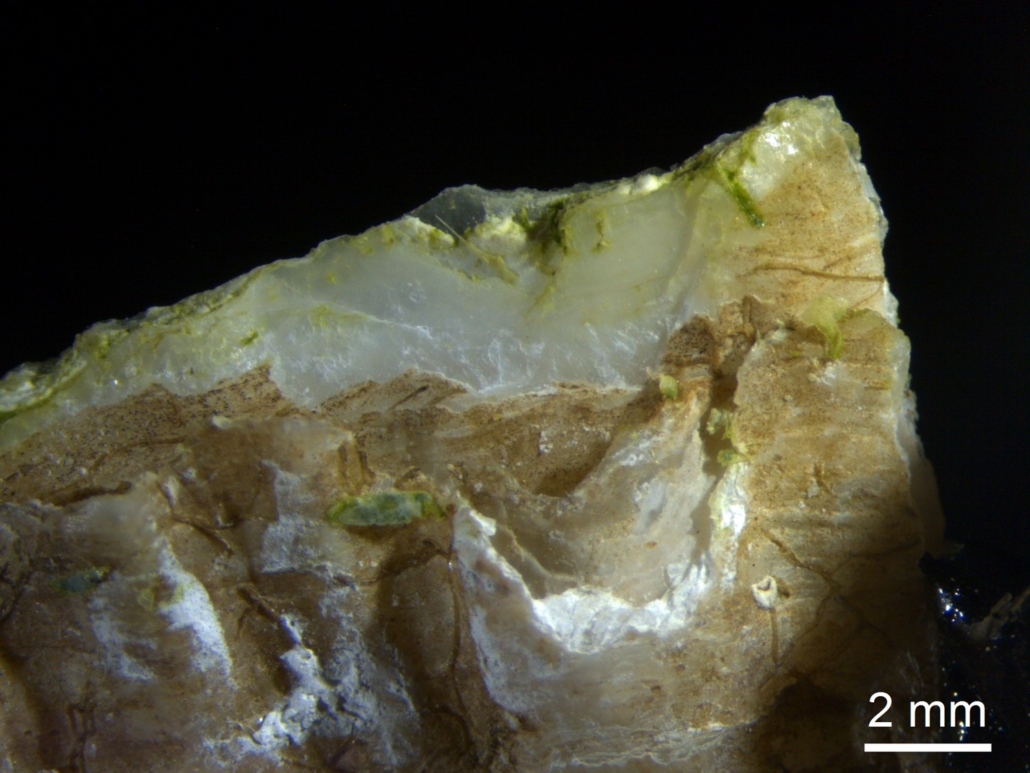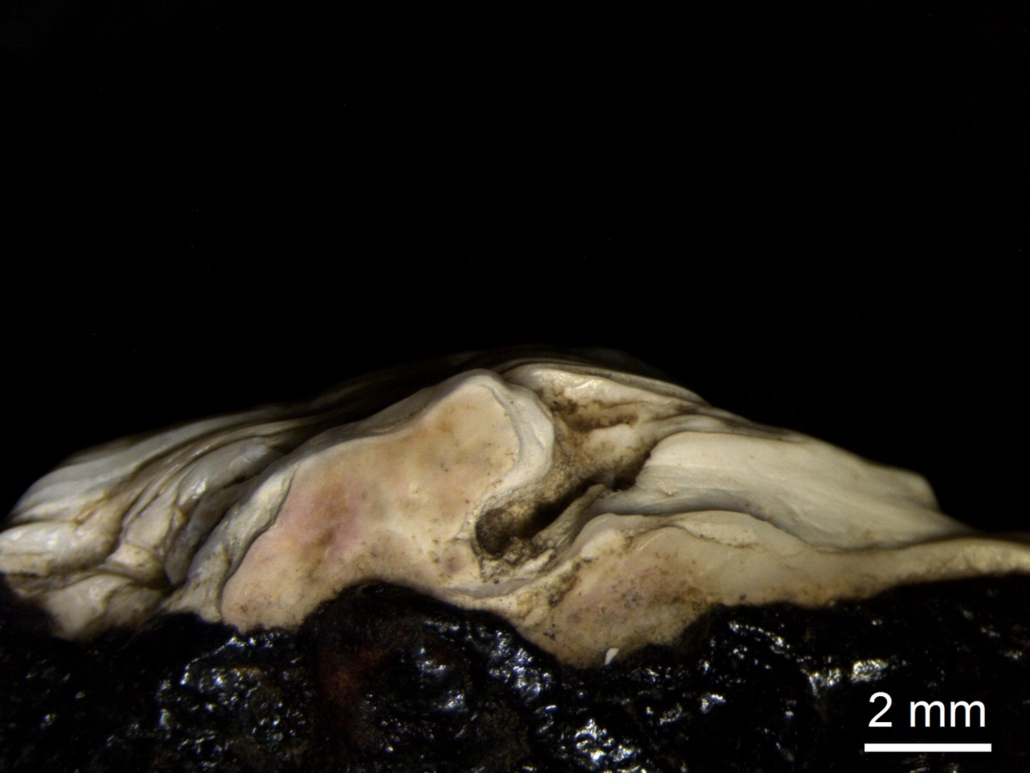Cutting cereals with shells, bone or wood
During several periods of the Neolithic, be it the Michelsberger or Vlaardingen period, flint tools to cut cereals are absent in the archaeological record. Could this absence be due to the fact that people cut cereals with other tools?
To answer this question an experiment was made in summer 2022 to cut cereals with other tools that the usual flint sickles of the Neolithic.
Sickles were made with shell inserts of oysters and freshwater mussels among others. They were then tested by cutting typical cereal types of the Neolithic.

Different types of sickles and harvesting knives used to cut cereals (from top: cattle rib, entire oyster and mussel shells, sickle with mussel shell inserts, sickle with oyster shell inserts and wooden sickle), (Photo: Marc-Philipp Häg).
These were einkorn wheat (Triticum monococcum), emmer wheat (Triticum dicoccum), barley (Hordeum vulgare) and bread wheat (Triticum aestivum).

Sickle with freshwater mussel inserts used in a bread wheat field, (Photo: Marc-Philipp Häg).
After hours of harvesting, the results were clear. Harvesting with other materials than flint is possible. Not only could cereal stems be cut off easily, but also the harvesting speed was similar to sickles made with flint inserts. This could indicate that in neolithic periods where flint sickles are absent, tools made from other materials, as shells, were used.
Significant use-wear traces were also visible on the different shell inserts. Be it dents, edge rounding, polish or striations, these traces showed how much the shells were worn off during the harvest.

Oyster shell insert before the harvest with first traces of grass (green spots), (Photo: Marc-Philipp Häg).

Oyster shell insert after three hours of harvest with very rounded and diminished shape, (Photo: Marc-Philipp Häg).
Text: Marc-Philipp Häg


